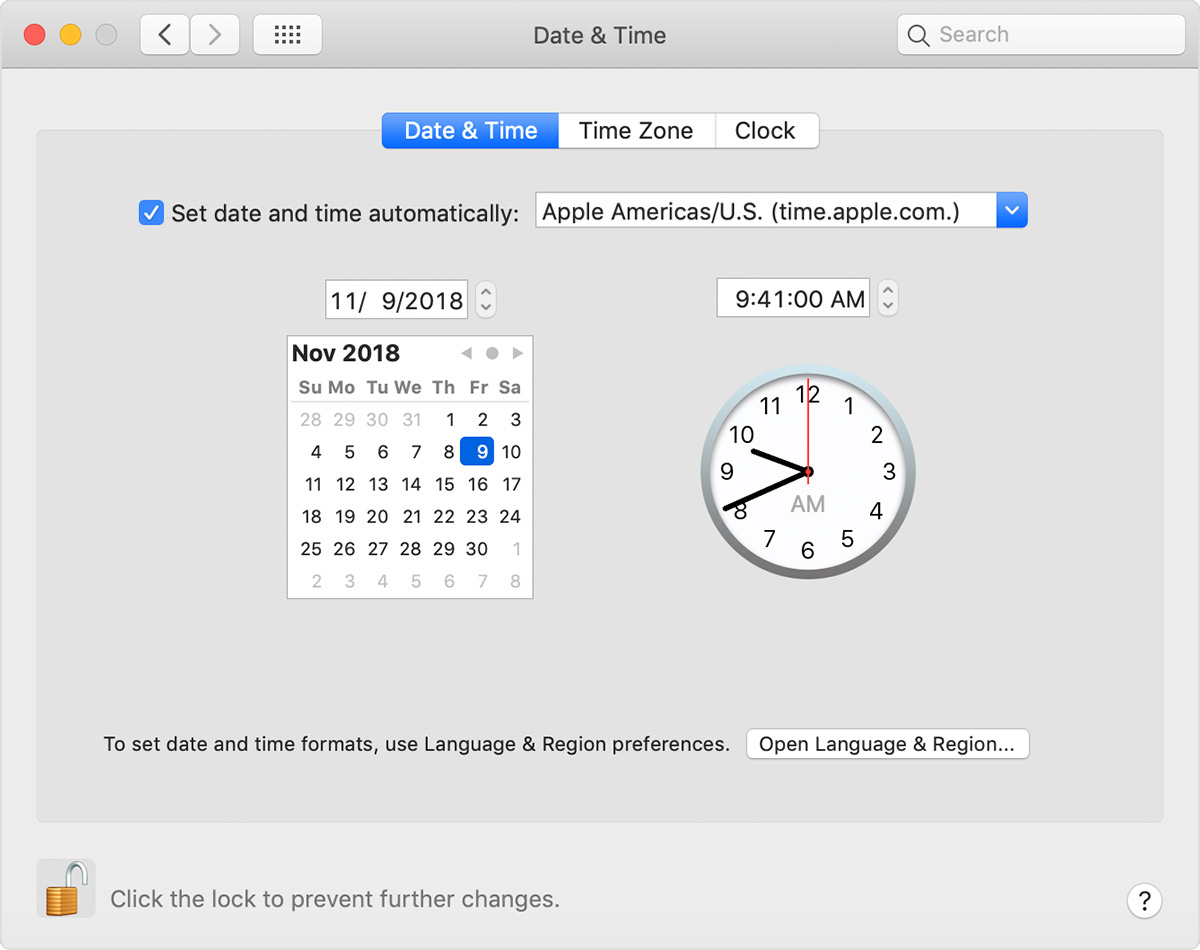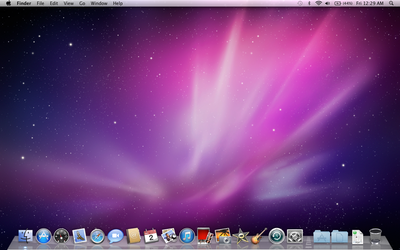Use Time Machine, the built-in backup feature of your Mac, to automatically back up your personal data, including apps, music, photos, email, and documents. Having a backup allows you to recover files that were deleted, or that were lost because the hard disk (or SSD) in your Mac needed to be erased or replaced. Learn how to restore your Mac from a backup.
Create a Time Machine backup
Video: Display Seconds on Clock and Flash Time Separators for Mac OS X Yosemite If you have problems with any of the steps in this article, please ask a question for more help,. The date must be formatted as: YYYY – The year – you can skip the first two digits/century MM – The month of the year, from 1 to 12. DD – The day of the month, from 1 to 31. Oct 02, 2020 Performing date and time operations in a shell script is a fairly common task when automating backup processes or generating scheduled reports. Unfortunately, dealing with date and time operations in shell or trying to format a date is never straightforward as the Linux date and macOS date command line behavior might differ slightly.
To create backups with Time Machine, all you need is an external storage device. After you connect the storage device and select it as your backup disk, Time Machine automatically makes hourly backups for the past 24 hours, daily backups for the past month, and weekly backups for all previous months. The oldest backups are deleted when your backup disk is full.
Connect an external storage device
Connect one of the following external storage devices, sold separately. Learn more about backup disks that you can use with Time Machine.
What Is The Latest Mac Os
- External drive connected to your Mac, such as a USB or Thunderbolt drive
- Network-attached storage (NAS) device that supports Time Machine over SMB
- Mac shared as a Time Machine backup destination
- AirPort Time Capsule, or external drive connected to an AirPort Time capsule or AirPort Extreme Base Station (802.11ac)
Select your storage device as the backup disk
- Open Time Machine preferences from the Time Machine menu in the menu bar. Or choose Apple menu > System Preferences, then click Time Machine.
- Click Select Backup Disk.

A Date In Time Mac Os X
Enjoy the convenience of automatic backups
After you select a backup disk, Time Machine immediately begins making periodic backups—automatically and without further action by you. The first backup may take a long time, but you can continue using your Mac while a backup is underway. Time Machine backs up only the files that changed since the previous backup, so future backups will be faster.
To start a backup manually, choose Back Up Now from the Time Machine menu in the menu bar. Use the same menu to check the status of a backup or skip a backup in progress.
Learn more
- Learn about other ways to back up and restore files.
- If you back up to multiple disks, you can press and hold the Option key, then choose Browse Other Backup Disks from the Time Machine menu.
- To exclude items from your backup, open Time Machine preferences, click Options, then click the add (+) button to add an item to be excluded. To stop excluding an item, such as an external hard drive, select the item and click the remove (–) button.
- If using Time Machine to back up to a network disk, you can verify those backups to make sure they're in good condition. Press and hold Option, then choose Verify Backups from the Time Machine menu.
When you set up your Mac for the first time or reinstall your macOS, it prompts you to select your time zone. Depending on the selected time zone, date and time are automatically set.
Even after setting up the macOS, changing the date and time is a straight-forward job. In fact, if you have selected the correct time zone, macOS automatically displays the correct date and time for your location.
That said, if you want to manually change the date and time, you can do so by following the given below instructions. You can also use these directions if your Mac is displaying incorrect date and time.

A Date In Time Mac Os X
Enjoy the convenience of automatic backups
After you select a backup disk, Time Machine immediately begins making periodic backups—automatically and without further action by you. The first backup may take a long time, but you can continue using your Mac while a backup is underway. Time Machine backs up only the files that changed since the previous backup, so future backups will be faster.
To start a backup manually, choose Back Up Now from the Time Machine menu in the menu bar. Use the same menu to check the status of a backup or skip a backup in progress.
Learn more
- Learn about other ways to back up and restore files.
- If you back up to multiple disks, you can press and hold the Option key, then choose Browse Other Backup Disks from the Time Machine menu.
- To exclude items from your backup, open Time Machine preferences, click Options, then click the add (+) button to add an item to be excluded. To stop excluding an item, such as an external hard drive, select the item and click the remove (–) button.
- If using Time Machine to back up to a network disk, you can verify those backups to make sure they're in good condition. Press and hold Option, then choose Verify Backups from the Time Machine menu.
When you set up your Mac for the first time or reinstall your macOS, it prompts you to select your time zone. Depending on the selected time zone, date and time are automatically set.
Even after setting up the macOS, changing the date and time is a straight-forward job. In fact, if you have selected the correct time zone, macOS automatically displays the correct date and time for your location.
That said, if you want to manually change the date and time, you can do so by following the given below instructions. You can also use these directions if your Mac is displaying incorrect date and time.
Adjusting time zone, date and time on a Mac
Step 1: Perform a click on the clock on the menu bar and then click the Open Date and Time Preferences option to open the Date & Time dialog.
Alternatively, open System Preferences and then click Date & Time to open the same.
Step 2: Since macOS automatically sets the date and time based on the selected time zone, it's a good idea to make sure that the correct time zone is selected before manually changing the date and time.
To do so, switch to the Time Zone tab, set the correct time zone. You need to turn off the Set time zone automatically using current location option to be able to manually set the time zone.
NOTE: If the option is grayed out, perform a click on the lock icon (located bottom left of the dialog) and then type the account password when prompted to do so.
To select your time zone, perform a click on your country or region on the world map. When you click on a location on the map, you can see the selected time zone and the closest city, just below the map.
Step 3: Now that you have set the correct time zone, it's time to change the date and time. Under the Date & Time tab, deselect Set date and time automatically option. When the option is turned on, macOS doesn't let you manually change the date and time.
Step 4: Select the correct date and time. While changing the time, be sure to choose the am/pm.
Change the clock display settings
If you would like to change the default settings of the clock, you can find settings under the Clock tab. There, you can switch between digital and analog clock, use 12 or 24-hour clock, show or hide am/pm and show or hide the date of the week and show/hide date on the menu bar.
There is also an option to announce the time.
Tip: When you are on the same page, we suggest you configure the macOS to display the date (displays only the date of the week by default) on the menu bar.

